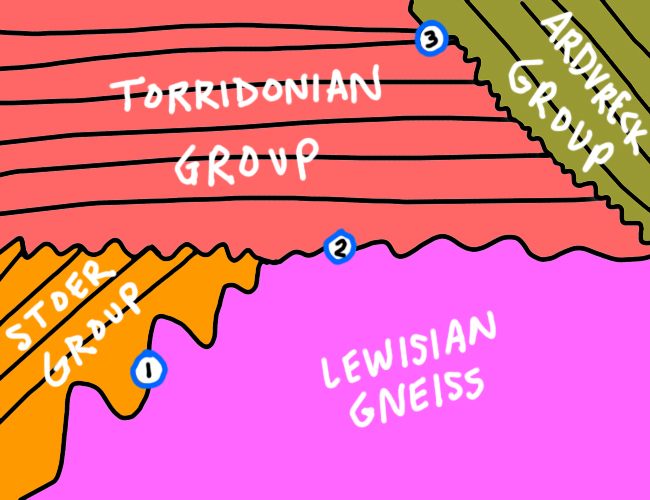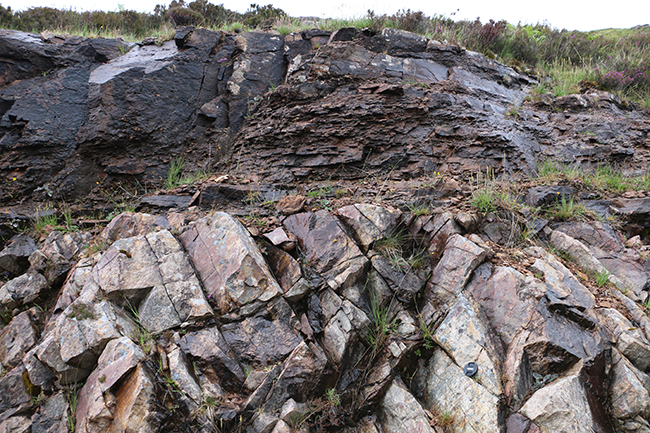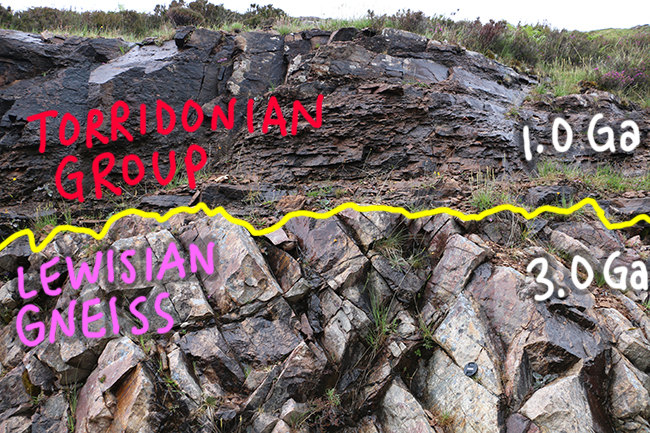Let’s now profile the next unconformity in the sequence of pulses of erosion and deposition recorded in the North-West Highlands of Scotland. For a reminder, here’s a cartoon cross-section through the four relevant units:

Today, we’ll look at the contact between the Lewisian Gneiss and the Torridonian Group (Diabeg Formation), marked with a “2” on the cartoon above, where it is exposed along the shore of Loch Assynt.
There are three outcrops where the contact is well exposed. This one is the most obvious:
Link GigaPan by Callan Bentley
Photo:

…and with annotations added:

Here’s a similar outcrop a few feet further west:
Link GigaPan by Callan Bentley
That’s a nice split – 50%/50%. But you can also see ~8 inches of Lewisian at the very bottom of this outcrop too. (Note also the ugly set of paleomag drill holes!):
Link GigaPan by Callan Bentley
Note how the unconformity surface here is more or less horizontal, in contrast to the high-relief sub-Stoer unconformity we saw last week.
Here is an exquisite outcrop of the Diabeg Formation (Torridonian Group) that I found down by the lochside, showing “Dreikanter” pebbles in cross-section (Brazil-nut-shaped clasts, thought to be wind-sculpted in a desert setting a billion years ago):
Link GigaPan by Callan Bentley
Finally, a small sample of the sandstone / conglomerate of the lower Torridonian (Diabeg Formation):
Link GIGAmacro by Callan Bentley
As far as unconformities in the North-West Highlands are concerned, we’re at: Two down, one to go … and the last one is an oddball.
